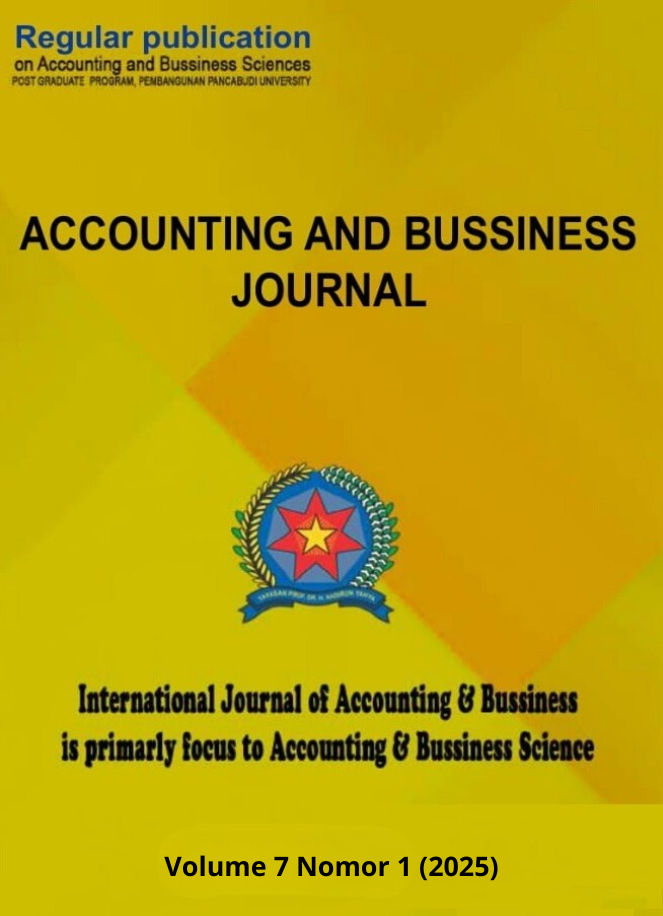Workload Analysis as a Basis for Human Resource Management at UD. Kreasi Lutvi
Abstract
This study aims to analyze workload as the basis for human resource (HR) management at UD. Kreasi Lutvi using a descriptive qualitative approach based on literature studies. Data were obtained from secondary sources such as indexed scientific journals, research articles, and relevant publications in the field of HR management and workload analysis. Data collection techniques were carried out through systematic searches in online databases such as Google Scholar and ResearchGate using related keywords. The results of the study indicate that in an effort to optimally manage HR, UD. Kreasi Lutvi needs to pay attention to several important aspects, namely: (1) Imbalance of Workload in Production Units; (2) Lack of HR and Training Needs; (3) Classification of Workload Levels; (4) Impact of Excessive Workload on Health and Performance; (5) Planning the Number of HR Appropriately, and (6) Improving HR Management. This study is expected to be the basis for making strategic decisions related to HR management more effectively and efficiently.
References
Ahmad, Y., Tewal, B., & Taroreh, R. N. (2019). The Effect of Work Stress, Workload, and Work Environment on Employee Performance at PT.Fif Group Manado. EMBA Journal, 7.
Fauzi, I., Sudiana, K. (2023). Workload Analysis to Determine the Optimal Number of Human Resources Using the Workload Analysis Method. Mirai Management Journal, 8(1).
Hanjani, A. R., & Singgih, M. L. (2019). Workload analysis at human capital bureau to increase productivity. IPTEK Journal of Proceedings Series, 5, 404-415.
Hidayat, R., Agusdin, Sakti, D. P. B. (2018). Workload Analysis for Planning Human Resource Needs for the Highways Division of the Public Works and Spatial Planning Office (Pupr) of West Lombok Regency. Journal of Master of Management Unram, 7(3).
Novita, I., Sari, M. I., Rozzaid, Y. (2017). Analysis of Human Resources Workload in Employee Activities (Case Study on Casual Employees of Semboro Sugar Factory Carbonatation Engineering Section). https://repository.unmuhjember.ac.id/6977/10/J.%20ARTIKEL%20-%20IRA%20NOVITA.pdf.
Puasari, S., & Yanti, E. D. The Role of Leaders in Improving Human Resource Management.
Sholihah, L. H., Rizqi, M. A. (2021). Workload Analysis in the Finance and Human Resources Department at XYZ Hospital. Scientific Journal of Business & Entrepreneurship, 13(3)
Susan, E. (2019). Human Resource Management. ADAARA Journal of Islamic Education Management, 9.
Utami, H. N., Prasetya, A., & Hendrawan, M. R. (2020). Workload Analysis as a Basis for Planning Employee Needs. Journal of Business and Management, 7(2).
Yanti, E. D., Sebayang, S. A., & Sanny, A. (2024). Socialization of HR Management in the Digital Era in Increasing Economic Income in Umkm Actors Pematang Serai Village, Langkat Regency. Sapangambei Manoktok Hitei Journal of Community Service, 4(2), 267-273.
Yeon, M.-S., Lee, Y.-K., Pham, D.-L., & Kim, K. P. (2022). Experimental Verification on Human-Centric Network-Based Resource Allocation Approaches for Process-Aware Information Systems. IEEE Access, 10, 23342-23354.
Zikri, M. (2023). Workload Analysis and Human Resource Management Process of Sdit Ar-Refah Tanjungpinang Teachers. Thesis, College of Economics Development Tanjungpinang.

This work is licensed under a Creative Commons Attribution-ShareAlike 4.0 International License.











